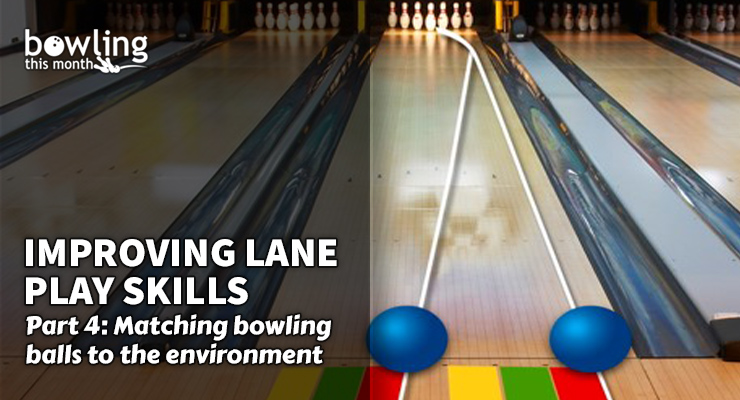Article Contents
- 1. Working with ball surface
- 1.1. Getting started
- 1.2. Surface defines reaction more than layout
- 2. Layouts
- 2.1. Establishing some layout variety
- 3. What about urethane?
- 4. Finding optimal pin carry
- 4.1. Matching up to your environment
- 4.2. Typical motion characteristics
- 5. A final note on variety
- 6. Conclusion
Note: This article is only available to Bowling This Month subscribers.
To wrap up our lane play series, let’s talk about bowling balls. We’ve talked about physical skills, observational ability, and how to develop these areas in your game. The final piece of the puzzle is obviously the bowling ball.
In this article, we’ll cover ball surface, layouts, and the basic shapes that you’ll see a bowling ball make so that you can better understand how to match up the equipment to the conditions and your game.
Working with ball surface
At this point, many bowlers are aware that surface is important. Still, many underestimate the value of changing surfaces and how significant a detail this can be. Simply put, the ball’s surface fine-tunes the reaction and perfects it for certain conditions.
You can’t make a ball do what the design and layout won’t allow (which we’ll cover soon), but you can take a decent ball reaction and make it great with surface adjustments. Of course, we must always follow the rules, which mostly prohibit surface adjustments during the block, so there’s a certain amount of foresight involved.
Getting started
Only about 10 percent of the balls I drill will go on the press without altering the ball’s surface from the box finish. Most of these are spare balls and urethane balls, so long as the roughness looks correct. Almost every reactive ball gets touched before drilling.
For one thing, this ensures that I can get the ball back to how it started by knowing exactly what I’ve done before drilling the ball. But when you consider oil absorption once the ball is thrown, this isn’t even the most important reason.
The fact is that the manufacturers’ processes aren’t always as perfect as you might think. With each ball that is done with a pad, the surface roughness ...
Already a premium member? Click here to log in.


